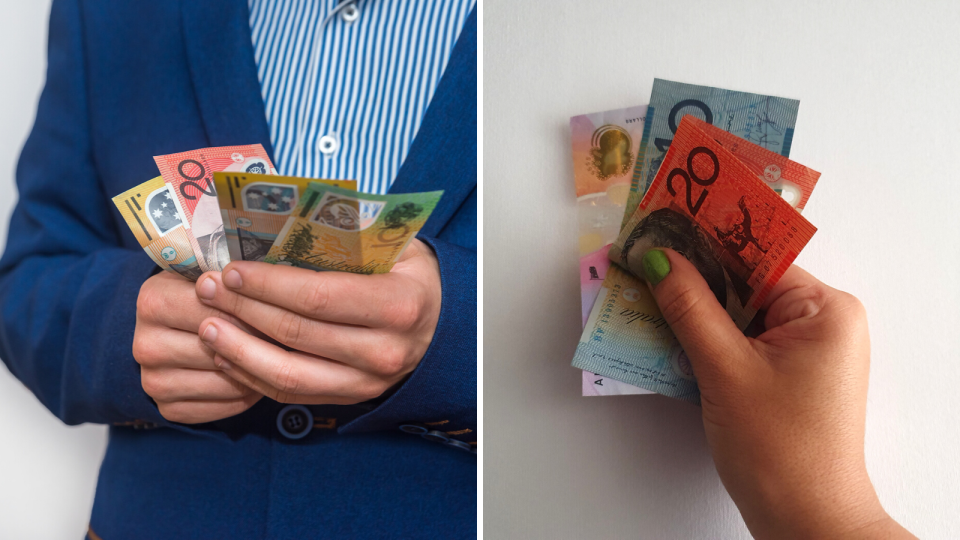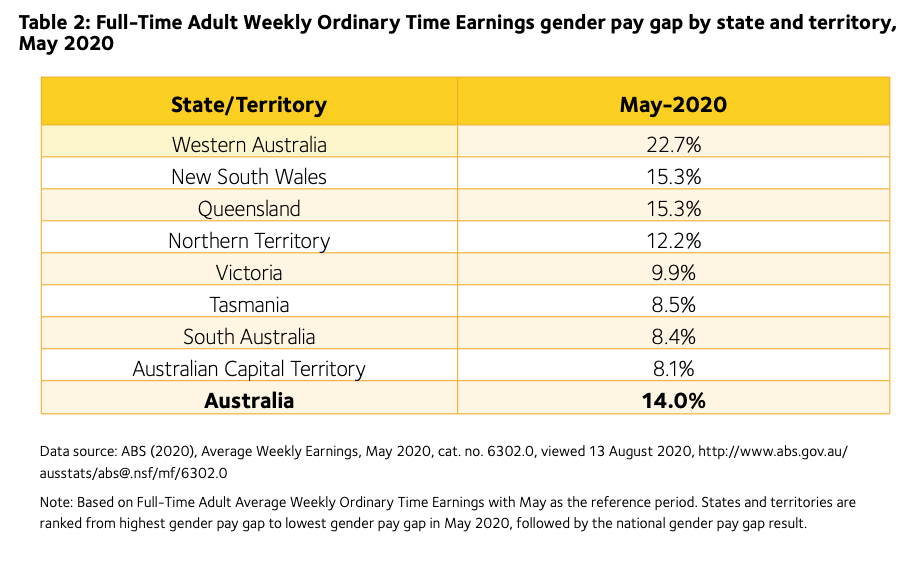How bad was the gender pay gap during Covid-19?

On average, Australian women get paid 14 per cent less than men – but a closer look reveals this figure is worse or better, depending on which state you’re looking at.
According to the Workplace Gender Equality Agency (WGEA) analysis of ABS figures, the pay disparity among Western Australian men and women is the worst in the whole country at 22.7 per cent.
The gender pay gap is second-worst in Queensland and New South Wales, both at 15.3 per cent.
The gap is beneath the national average in the Northern Territory (12.2 per cent), South Australia (8.4 per cent), Victoria (9.9 per cent), Tasmania (8.5 per cent) and the ACT (8.1 per cent).
Also read: The top Australian workplaces for gender equality in 2020
‘Vicious cycle’: Coronavirus dents equality
Also read: 4 areas where women are leading in finance
The gap is worst in the professional, scientific and technical services sector (24.1 per cent) and smallest in the public administration and safety sector (5.8 per cent).

The pay gap difference is driven by the job profiles of each state – in WA, for instance, the workforce is concentrated in the mining and construction sector, meaning higher earnings and lower representation of women.
Meanwhile, the public administration and safety sector has a more gender-balanced representation, according to WGEA.
The impact Covid-19 has had on the gender gap
The national pay gap during the pandemic period has also been influenced by the fact that lower-paying jobs and industries, such as retail, hospitality and accommodation sectors, were over-represented in lost jobs and working hours.
“This means they are not included in the full-time workforce, explaining overall increases in the average weekly earnings for both men and women.”
But according to WGEA, there are too many variables in how Covid-19 has affected the workforce to sufficiently assess how the pandemic has affected the pay gap.
“Given changes to the data by the ABS during the Covid-19 period, it is not possible to compare the current national gender pay gap to previous periods,” WGEA stated.
More men receive JobKeeper payments than women (52.9 per cent vs 47.1 per cent).
Broadly speaking, the gender pay gap is influenced by factors like discrimination and bias in hiring, women doing more unpaid care or domestic work, and lost career opportunities as women take more time out of work.
Make your money work with Yahoo Finance’s daily newsletter. Sign up here and stay on top of the latest money, economy, property and work news.
Follow Yahoo Finance Australia on Facebook, Twitter, Instagram and LinkedIn.

 Yahoo Finance
Yahoo Finance 

